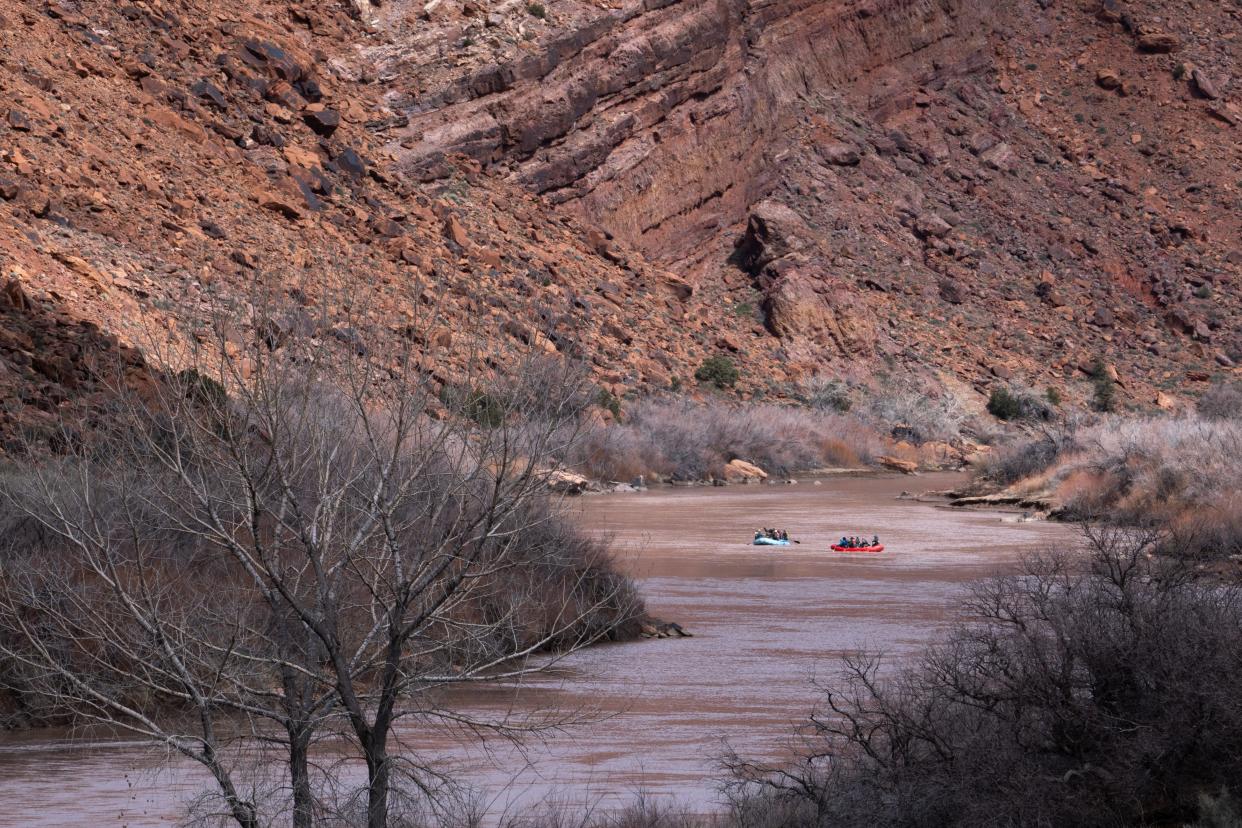Arizona has a water crisis. Here's what that means for some metro Phoenix cities

The West Valley is at the center of a conversation about water in Arizona. In January, Gov. Katie Hobbs called for the state Department of Water Resources to release a report showing the Hassayampa sub-basin didn’t have as much water as previously thought.
Most cities in the West Valley, including Goodyear, Avondale and Surprise, have a 100-year water designation, but Buckeye — one of the nation's fastest-growing cities, according to U.S. Census figures — does not. However, the city is working toward that designation, Buckeye Mayor Eric Orsborn has said.
The designation is rigorous to achieve and requires cities to prove to the Arizona Department of Water Resources that they have 100 years' worth of water.
More: A report confirms Buckeye doesn't have enough water. What does the growing city do next?
Local leaders and water experts discussed Buckeye as well as the future of West Valley water March 30 at an event hosted by Leadership West.
Here are eight things you should know about the state's water crisis and how it will impact the West Valley.
The state mostly uses groundwater
Groundwater accounts for about 41% of water use in the state, while the Colorado River water accounts for 38% and other surface water sources make up 18%, Sarah Porter, director of ASU's Kyl Center for Water Policy, said. Reclaimed, or recycled wastewater, is another 5% of the state’s water usage.
But Porter said the state will need to find alternative water sources. Groundwater is a nonrenewable source, taking thousands of years to form.
The Colorado River shortage has 2 causes
The Colorado River shortage can largely be attributed to two factors, Porter said.
One of those factors is the drought, with Arizona currently in its 23rd year of drought. But at this point, it may make more sense to attribute it to climate change, Porter said, emphasizing that the state will need to make permanent changes when it comes to water allocation.
Although Arizona has had a rainy year, only about 2% of precipitation recharges aquifers, and about 98% of it evaporates. Arizona Department of Water Resources Director Tom Buschatzke said he hopes that the rainy year will not cause Arizonans to lose momentum when it comes to water conservation.
The Colorado River was also overallocated between several states in 1922, with the overallocations really being felt in the past 20 years, Porter said.
For subscribers: SRP customers will see another price hike as utility's expenses grow. Here's what it will cost you
Different water sources have different regulations
The key to understanding water, Porter said, is understanding that each source of water has its own set of laws and regulations.
For example, some groundwater is in active management areas, which is an area that is subject to regulations over how much water can be pumped out of the ground. But some groundwater in active management areas is regulated, while groundwater that’s not in active management areas is not regulated. Even effluent or reclaimed water has its own set of rules and regulations, Porter said, as well as Colorado River allocations.
The West Valley is located in the Phoenix active management area, which is subject to its own specific rules.
Most cities have a 100-year assured water supply
The 100-year assured water supply designation is extremely rigorous, Porter said, which is awarded by the Department of Water Resources. A designation means that a city or developer has proven to the department that it will have water for 100 years, including for its projected population expansion.
While most cities in the West Valley like Goodyear, Avondale and Surprise have a designation, Buckeye currently does not. But the city is working toward obtaining that designation, Porter said.
For subscribers: With clock ticking, Arizona lawmakers float ideas to help Rio Verde Foothills get water
Developers can earn a 100-year assured water certificate
Developers, on the other hand, can earn a 100-year assured water supply certificate if the city does not have a 100-year assured water designation. Developers cannot begin construction until they have a 100-year assured water designation.
Cities and developers can earn water credits
The Department of Water Resources keeps count of water credits earned by cities and developers. The credits can be bought and sold and placed elsewhere through the assured water supply program, Buschatzke said.
But the issue is that the water may not be physically available if the credit is not recovered in the same area it was created. So, although credits can be sold, there is not a guarantee the water will be physically recoverable in the other area.
The state is looking into desalination
Desalination is six to eight years away at a minimum, Buschatzke said.
But desalination is also extremely expensive — a 2020 study found that the water would likely cost about $2,500 per acre-foot. Now, that number is probably upwards of $3,000, Buschatzke said.
The West Valley is not running out of water
The water supply for people who are already living in the West Valley is extremely safe, Buschatzke said. Although the department stopped issuing new certificates for developers relying on groundwater, the intention was to protect the water supply of those who are already living in the area.
"I think people can be very confident that those that are in their homes today are going to be secure in their water future for many, many decades out to the future," Buschatzke said.
Buckeye Mayor Eric Orsborn also assured people that developers who already have a certificate can be sure that their water supply is safe.
This article originally appeared on Arizona Republic: What Arizona's water crisis means for some Phoenix-area cities

